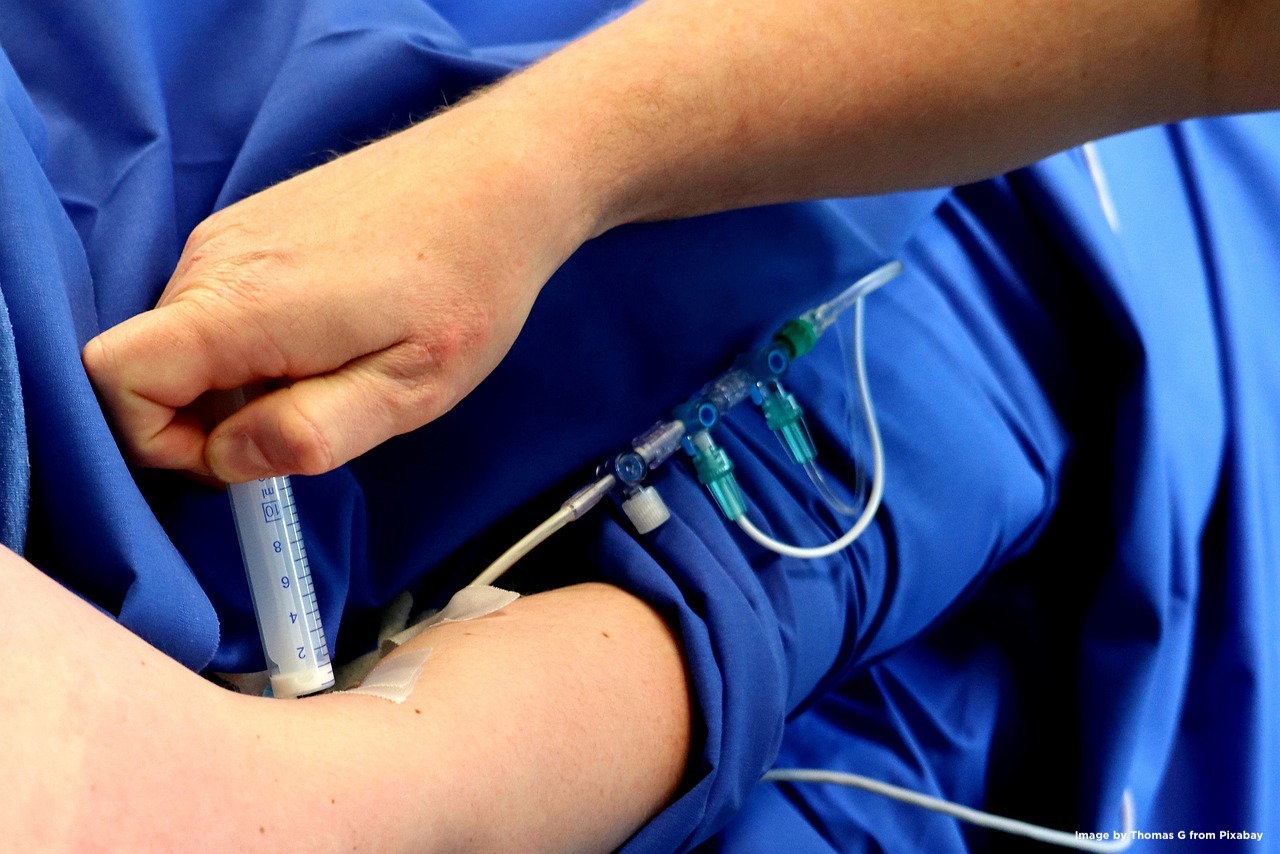Resistencia antibiótica y aspectos clínicos de Neisseria gonorrhoeae anorrectal en un hospital de CABA, Argentina
Resumen
La infección por Neisseria gonorrhoeae (NG) es considerada de alta prioridad en salud pública, por su capacidad para desarrollar resistencia a la mayoría de los antibióticos empleados para tratarla.
La presentación anorrectal suele ser asintomática y frecuente en hombres que tienen sexo con hombres (HSH). En Argentina, se recomienda terapia antibiótica dual (ceftriaxona+azitromicina/doxiciclina) como primera línea empírica.
Este estudio observacional y retrospectivo se realizó para evaluar el porcentaje de positividad de NG anorrectal, el perfil de sensibilidad a penicilina, tetraciclina, ciprofloxacina, ceftriaxona, cefixima y azitromicina, así como los aspectos clínicos-epidemiológicos de los pacientes atendidos entre 20/10/2015 y 20/03/2020 en consultorios coloproctológicos de un hospital público.
Se detectaron 55/436 hisopados rectales positivos para NG (13%). El 95% era HSH y 71%, VIH+. En 18/55 NG fue la única infección. Las co-infecciones más frecuentes: HPV (38%) y C. trachomatis (35%).
La sensibilidad a cefalosporinas de espectro extendido (CEE) y a azitromicina fueron 100% y 98%, respectivamente. Se observó la emergencia local de los primeros cinco aislamientos de NG anorrectal con sensibilidad reducida (SR) a CEE, el primer aislamiento con categoría no-sensible a azitromicina y otro con SR a azitromicina concomitantemente con SR a CEE.
Aunque el uso de terapia empírica dual sigue siendo adecuado para nuestra institución, se observó la emergencia de aislamientos con SR y NS a las drogas de primera línea, evidenciando la importancia de la vigilancia epidemiológica a nivel local para definir los tratamientos empíricos.
Descargas
Citas
1. WHO. Global progress report on HIV, viral hepatitis and sexually transmitted infections, 2021. May 20, 2021.
2. Workowski KA. Sexually Transmitted Infections and HIV: Diagnosis and Treatment. Top Antivir Med. 2012; 20: 11-16.
3. Bernstein KT, Marcus JL, Nieri G, et al. Rectal gonorrhea and chlamydia reinfection is associated with increased risk of HIV seroconversion. Journal of Acquired Immune Deficiency Syndromes 2010; 53: 537-43.
4. World Health Organization (WHO). Global action plan to control the spread and impact of antimicrobial resistance in Neisseria gonorrhoeae. World Health Organization (WHO), Department of Reproductive Health and Research. 2012; 1: 1-36.
5. Kidd S, Zaidi A, Asbel L, Baldwin T, Gratzer B, Guerry S et al. Comparison of antimicrobial susceptibilities of pharyngeal, rectal, and urethral Neisseria gonorrhoeae isolates among men who have sex with men. 2015 Antimicrob Agents Chemother 2015 59:2588–2595.
6. Patton ME, Kidd S, Llata E, Stenger M, Braxton J, Asbel L et al. Extragenital gonorrhea and chlamydia testing and infection among men who have sex with men–STD Surveillance Network, United States, 2010–2012. Clin Infect Dis 2014. 58:1564–1570.
7. Dukers-Muijrers NH, Schachter J, van Liere GA, Wolffs PF and Hoebe CJ. What is needed to guide testing for anorectal and pharyngeal Chlamydia trachomatis and Neisseria gonorrhoeae in women and men? Evidence and opinion. BMC Infectious Diseases. 2015; 15: 1-13.
8. Comunicado de prensa OMS. El aumento de la gonorrea resistente a los antibióticos hace necesarios nuevos fármacos. Ginebra, 7 de julio de 2017.
9. Centers for Disease Control and Prevention. Sexually Transmitted Disease Surveillance 2017: Gonococcal Isolate Surveillance Project (GISP) Supplement and Profiles. Atlanta: U.S. Department of Health and Human Services; 2019.
10. Wi T, Lahra MM, Ndowa F, Bala M, Dillon J-AR, Ramon-Pardo P, et al. (2017) Antimicrobial resistance in Neisseria gonorrhoeae: Global surveillance and a call for international collaborative action. PLoS Med 14(7): e1002344.
11. Organización Mundial de la Salud. WHO guidelines for the treatment of Neisseria gonorrhoeae.Ginebra: OMS; 2016.
12. Magnus Unemo, Monica M. Lahra, Michelle Cole, Patricia Galarza, Francis Ndowa, Irene Martin et al. World Health Organization Global Gonococcal Antimicrobial Surveillance Program (WHO GASP): review of new data and evidence to inform international collaborative actions and research efforts. Sex Health. 2019 September; 16(5): 412–425.
13. St. Cyr S, Barbee L, Workowski KA, et al. Update to CDC’s Treatment Guidelines for Gonococcal Infection, 2020. MMWR Morb Mortal Wkly Rep 2020; 69: 1911–1916.
14. Helen Fifer, John Saunders, Suneeta Soni, S Tariq Sadiq and Mark FitzGerald. 2018 UK national guideline for the management of infection with Neisseria gonorrhoeae. International Journal of STD & AIDS 2020, Vol. 31(1) 4–15
15. Gianecini R, Oviedo C, Bardossy E, Galarza P. Evaluation of antimicrobial susceptibility and resistance in Neisseria gonorrhoeae, Argentina, 2009–2013. In: Abstracts of the Interscience Conference on Antimicrobial Agents and Chemotherapy/International Congress of Chemotherapy, San Diego, Sep 17–21, 2015. Washington (DC): American Society for Microbiology; 2015. Abstract C-672.
16. Gianecini R, Oviedo C, Stafforini G, Galarza P. Neisseria gonorrhoeae resistant to ceftriaxona and cefixima, Argentina. Letter to the Editor. Emerging Infectious diseases. Vol22, Nro. 6, June 2016.
17. Instituto Nacional de Enfermedades Infecciosas (INEI). Servicio Transmisión Sexual. Incremento y reemergencia de aislamiento de Neisseria gonorrhoeae con baja y alta resistencia a la azitromicina en Argentina. Ciudad Autónoma de Buenos: ANLIS Dr. C. G Carlos Malbrán, 2020.
18. Recomendaciones de diagnóstico y tratamiento de las Infecciones de Transmisión Sexual de la Comisión de HIV/SIDA y de ITS de la Sociedad Argentina de Infectología. Año 2020.
19. López L. et al. Manifestaciones Coloproctológicas de las Infecciones de Transmisión Sexual Ocasionadas por Chlamydia Trachomatis, Neisseria Gonorrhoeae y Treponema Pallidum. Presentación Casuística. Svidler REV ARGENT COLOPROCT | 2019 | VOL. 30, N° 4: 80-87
20. Kirkcaldy RD, Weston E, Segurado AC, Hughes G. Epidemiology of gonorrhoea: a global perspective. Sex Health. 2019 Sep; 16(5):401-411.
21. Michelle L. Johnson Jones, Johanna Chapin-Bardales, Destani Bizune, John R. Papp, Christi Phillips, Robert D. Kirkcaldy et al. Extragenital Chlamydia and Gonorrhea Among Community Venue–Attending Men Who Have Sex with Men-Five Cities, United States, 2017. Morbidity and Mortality Weekly Report. Weekly / Vol. 68 / No. 14. April 12, 2019.
22. Yang L-G, Zhang X-H, Zhao P-Z, Chen Z-Y, Ke W-J, Ren X-Q. Gonorrhea and chlamydia prevalence in different anatomical sites among men who have sex with men: a cross-sectional study in Guangzhou, China. BMC Infect Dis 2018; 18(1):675.
23. Allan–Blitz LT, Leon SR, Bristow CC, Konda KA, Vargas SK, Flores JA et al. High prevalence of extra-genital chlamydial or gonococcal infections among men who have sex with men and transgender women in Lima, Peru. Int J STD AIDS 2017;28(2):138
24. La Rosa L, Svidler López L, Entrocassi AC, et al. Chlamydia trachomatis anorectal infections by LGV (L1, L2 and L2b) and non-LGV serotypes in symptomatic patients in Buenos Aires, Argentina. Int J STD AIDS. 2021 Dec; 32(14):1318-1325.
25. Ministerio de Salud. Presidencia de la Nación. Alerta epidemiológica: Casos de linfogranuloma venéreo (LGV) en Argentina. 2018.
26. Magnus Unemo, H Steven Seifert, Edward W. Hook III, Sarah Hawkes, Francis Ndowa, Jo- Anne R. Dillon. WHO global antimicrobial resistance surveillance for Neisseria gonorrhoeae 2017–18: a retrospective observational study. Lancet Microbe 2021.
27. United States Food and Drug Administration. Nucleic Acid Based Tests.https://www.fda.gov/medicaldevices/vitro-diagnostics/nucleic-acid-based-tests (2019).







